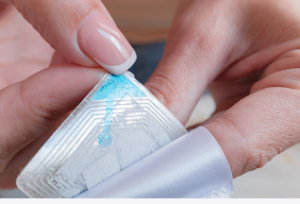RAMPRFID RFID tags are becoming a popular alternative to barcodes, especially for tracking inventory. Protrac iD offers RFID and RTLS solutions to help businesses manage inventory, from medicine stock inventory using passive RFID tags to hospital linen management using active RFID tags.
 This technology improves decision-making, reduces errors and enhances efficiency across various applications. It can also help retailers save money by reducing losses due to theft and wastage.
This technology improves decision-making, reduces errors and enhances efficiency across various applications. It can also help retailers save money by reducing losses due to theft and wastage.
Accuracy
An RFID tag is a small electronic device that contains information stored in microchips. Its ability to transmit data wirelessly allows it to be read by scanners or computers that emit radio signals to activate the microchip’s memory. The technology is commonly used to track items, animals and currency. Its use is expanding worldwide, including in Australia, as it offers a range of advantages for retailers and supply chain providers.
Compared to traditional barcodes, RFID tags have a higher level of accuracy. They can provide more precise data on an item’s location, which helps track inventory and improve processes. They can also be scanned from a distance, eliminating the need for line-of-sight scanning. Additionally, they can be used to automate warehouse operations and reduce labour costs.
Retailers implementing RFID can increase inventory accuracy to 99 per cent and improve customer service by reducing out-of-stock and overstock situations. In addition, they can offer loyalty accounts and mobile payments and improve merchandising by detecting a product’s movement throughout the store. These benefits make RFID technology a worthwhile investment for any retailer.
Another advantage of RFID is that it can be easily integrated with existing POS systems. It can be installed in the exact location as barcodes, enabling customers to choose between the two options for checkout. It can also identify products and their place in a store and automatically update inventory. In addition, it can be used to track the movements of shoppers and employees throughout the store.
The benefits of RAMPRFID RFID tags Australia are extensive, but the technology has challenges. RFID tags can be hampered by metal and other interference or have shorter read ranges than other tracking labels. The technology is also expensive and requires a network to function correctly.
Several hospitals and aged care facilities use RFID to track medical assets and improve inventory management. Surgical instruments and portable medical equipment (PME) are costly to replace, so RFID helps to reduce the risk of loss or misplacement. In addition, it can help with monitoring use-by dates and preventing theft. In addition, the National Livestock Identification System (NLIS) is replacing traditional tail tags with RFID tags for animal traceability and food safety purposes.
Visibility
An RFID tag is a small electronic device that contains an antenna and a microchip. It can be affixed to almost anything, from goods in a retail store to medical equipment in a hospital. These tags provide a secure, reliable, and accurate way to track inventory. They also offer a variety of other applications, including access control, animal tracking, and payment systems.
These tags can transmit data over long distances and be read even if the items are not in sight of the RFID reader. This technology allows businesses to improve operational efficiency, reduce capital costs and gain a competitive advantage in the marketplace. The RFID tag uses a radio wave to transfer information to the reader, relaying it to the database. The database stores all the data for that particular item. This information can then be accessed by authorised personnel. The system also helps eliminate human error and provides real-time visibility into inventory levels.
Many retailers use RAMPRFID RFID tags Australia to increase inventory accuracy and streamline omnichannel fulfilment processes. The tags help grow sales, eliminate loss and improve customer outcomes. Despite these advantages, many smaller retailers have yet to adopt the technology. However, they realise that implementing this technology can make them more profitable.
The RFID system is based on the same technology used in credit cards, passports, and security passes. It can be scanned from several meters away and is compatible with other RFID systems. It can also be used in conjunction with barcode scanners. It can be customised for specific applications and is being used in various industries in Australia.